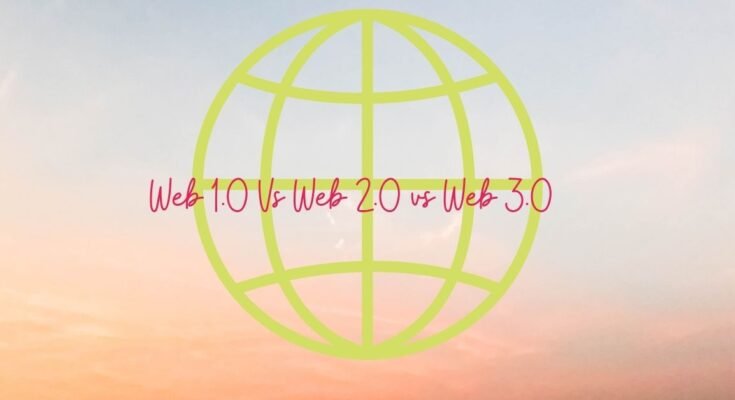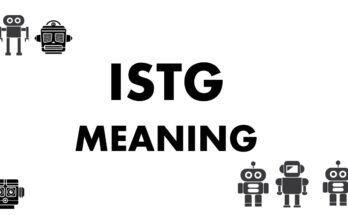We all use the Internet, but how many of us really know what’s going on under the hood? In this blog post, I want to explore the difference between Web 1.0, 2.0 and 3.0, in order to help you understand why certain things are done a certain way on the web.
How to see old Instagram Bios | Downloading WhatsApp for Black Berry [ Complete Guide ]
Whether you’re a tech-savvy individual or not, it’s important to have at least a basic understanding of these terms so that you can be an informed user of today’s technology. Stay tuned for my next post, where I’ll be discussing app development trends!
SHORT ANSWER Web 1.0 vs 2.0 vs 3.0:
A web is a network of computers that allows people to connect to and share information and resources online through the World Wide Web or simply the Web.
The World Wide Web, or simply the Web, is a network of computers that provides worldwide information access. It began as the Mosaic browser project in 1993 and was launched to the public at CERN on January 1, 1994. The first generation of the World Wide Web (Web 1.0) was the first web platform for people to add and view real-time content.
Web 2.0 is a term used to describe the use of new technologies and methods on the Web. It’s based on the notion of “simple customization and scalability,” with features like greater interactivity and video content.
The term Web 3.0 refers to a new platform that is made up of the web and a novel approach to doing things. Web 3.0, as described by Web 3.0, comprises the production of high-quality content and services by highly trained individuals utilizing Web 2.0 technology as an enabler. We will be able to implement the Semantic Web through specialized technologies as part of Web 3.0.
What Is Web 1.0
Web 1.0, or Web 1/n, is the first version of the World Wide Web that was made available to the public. It emerged before social media platforms and applications were created to simplify web-browsing experiences, making it more easily accessible for everyone to use.
People used this platform to share information through websites.
The first website to ever be created was available on the Internet on August 6, 1991. It was a simple list of hyperlinks to other websites created by Tim Berners-Lee. When the public became interested in this new development that allowed them to share information, more people started using it to publish their own content and create websites.
What Is Web 2.0
Web 2.0 is a term used to describe the use of new technologies and methods on the Web. It was coined in 2004 by Darcy DiNucci, an American technologist, as a way to distinguish between what she considered “the early web” and those features that were added as a result of Web 2.0 technologies. Web 2.0 is based on the notion of “simple customization and scalability,” meaning that users are able to alter their user experience to fit their needs.
Web 2.0 takes advantage of different programmatic tools: RSS, APIs, and content syndication, for instance, use an open data distribution standard for which a website is “subscribed” to receive updates. The user can set up their own RSS reader software in order to have the most current content at any given time. Web 2.0 also refers to websites that offer more interactivity, allowing users to upload and share videos, pictures, audio files, and other media content with ease through various social media platforms. Basically, this version of the internet was a whole new way to share information and an opportunity for people to connect online.
What Is Web 3.0
Web 3.0 is a term used today that refers to the development of the web as a platform for interconnectedness designed with artificial intelligence (AI) at its core. In this version of the web, AI-based algorithms will use data from online requests and actions to perform automated services that would otherwise be time-consuming or impossible for a human to complete. This technology allows the simultaneous processing of an exponentially growing number of data points.
Web 3.0 is also referred to as the semantic web because it’s based on the idea that machines, not just humans, should be able to read and understand information on the web. This means that computers will eventually be able to make inferences and behave in a manner similar to people without the use of explicit instructions.
Web 3.0 uses semantic data rather than all data used in previous versions of the internet, meaning that information is encoded using established data, which allows the web to be read by both machines and humans.
Difference Between Web 2.0 And 3.0
Web 1.0 was oriented to the sharing of information through websites, while Web 2.0 was based on “simple customization and scalability” with features like greater interactivity and sharing of multimedia content. Web 3.0, on the other hand, is focused on AI-based technologies that allow machines to read and understand the information within the semantic web.
The development of artificial intelligence allows for faster processing of information in the semantic web. Because it uses this type of information encoding, Google can produce results that are useful for the user when they perform a search on the web.
In Web 2.0, information is given to users in order for them to make their own choices and interact with others online through different social media platforms. In the semantic web, pre-programmed responses are able to provide automated services that search engines can understand and use without the need for human intervention.
Web 2.0 is based on “simple customization and scalability” with features like greater interactivity and sharing of multimedia content. Web 3.0, on the other hand, is focused on AI-based technologies that allow machines to read and understand the information within the semantic web; using data from online requests and actions to perform automated services that would otherwise be time-consuming or impossible for a human to complete.
In Web 2.0, users are able to alter their user experience to fit needs through customization and scalability. In the semantic web, machines use information from online requests and actions to perform automated services that would otherwise be time-consuming or impossible for a human to complete.
Web 2.0 is oriented to the sharing of information from websites, while Web 3.0 focuses on AI-based technologies that allow machines, not just humans, to read and understand information on the web as part of the semantic web design. In Web 2.0, information is given to users in order for them to make their own choices and interact with others online through social media platforms. In the semantic web, pre-programmed responses are used to provide automated services that search engines can understand and use without the need for human intervention.
Web 2.0 focuses on user customization and scalability using greater interactivity and sharing of multimedia content. Web 3.0, on the other hand, is based on AI-based technologies that allow machines to read and understand the information within the semantic web; using data from online requests and actions to perform automated services that would otherwise be time-consuming or impossible for a human to complete.
Web 2.0 has features like greater interactivity and sharing of multimedia content, while Web 3.0 is based on AI-based technologies that allow machines to read and understand the information within the semantic web; using data from online requests and actions to perform automated services that would otherwise be time-consuming or impossible for a human to complete.
Features Of Web 2.0 Sites
– Multimedia Content Sharing
– Greater Interactivity
– Customization And Scalability
Features Of Web 3.0 Sites
– AI-Based Technologies
– Machines That Can Read And Understand Information Within The Semantic Web
– Data From Online Requests And Actions To Perform Automated Services That Would Otherwise Be Time Consuming Or Impossible For A Human To Complete




